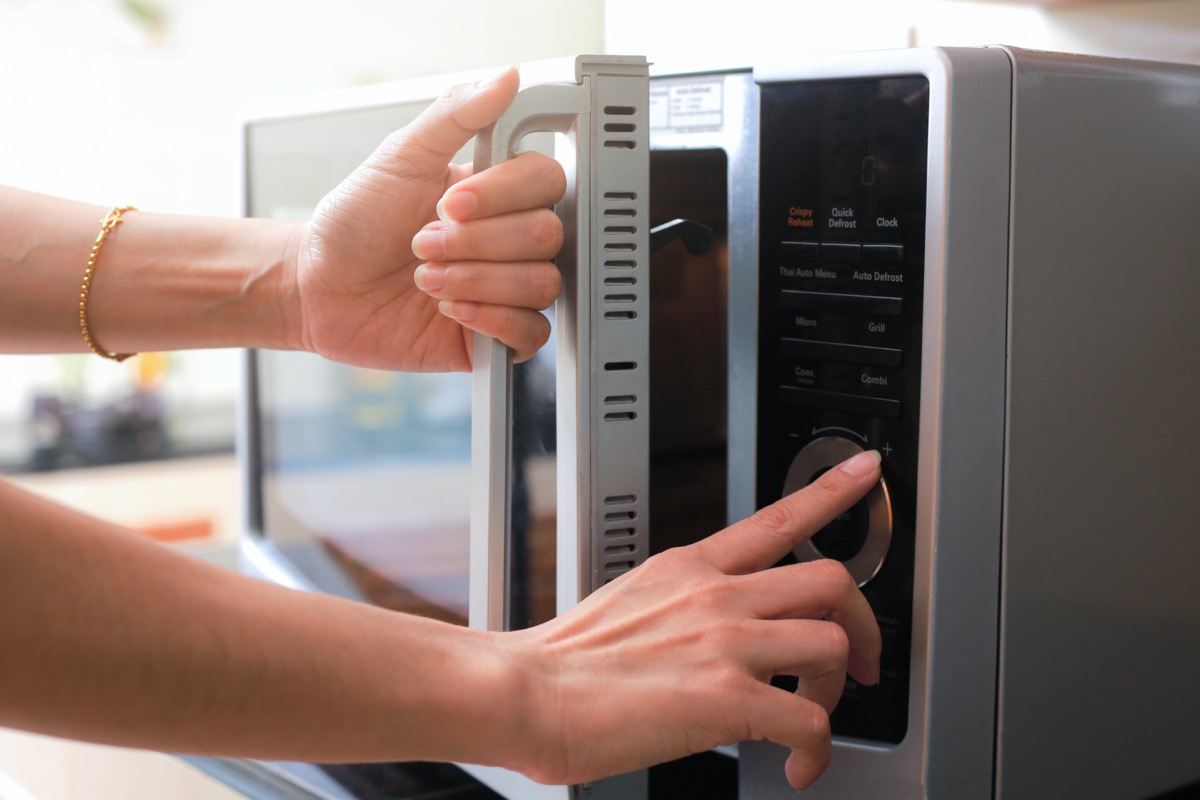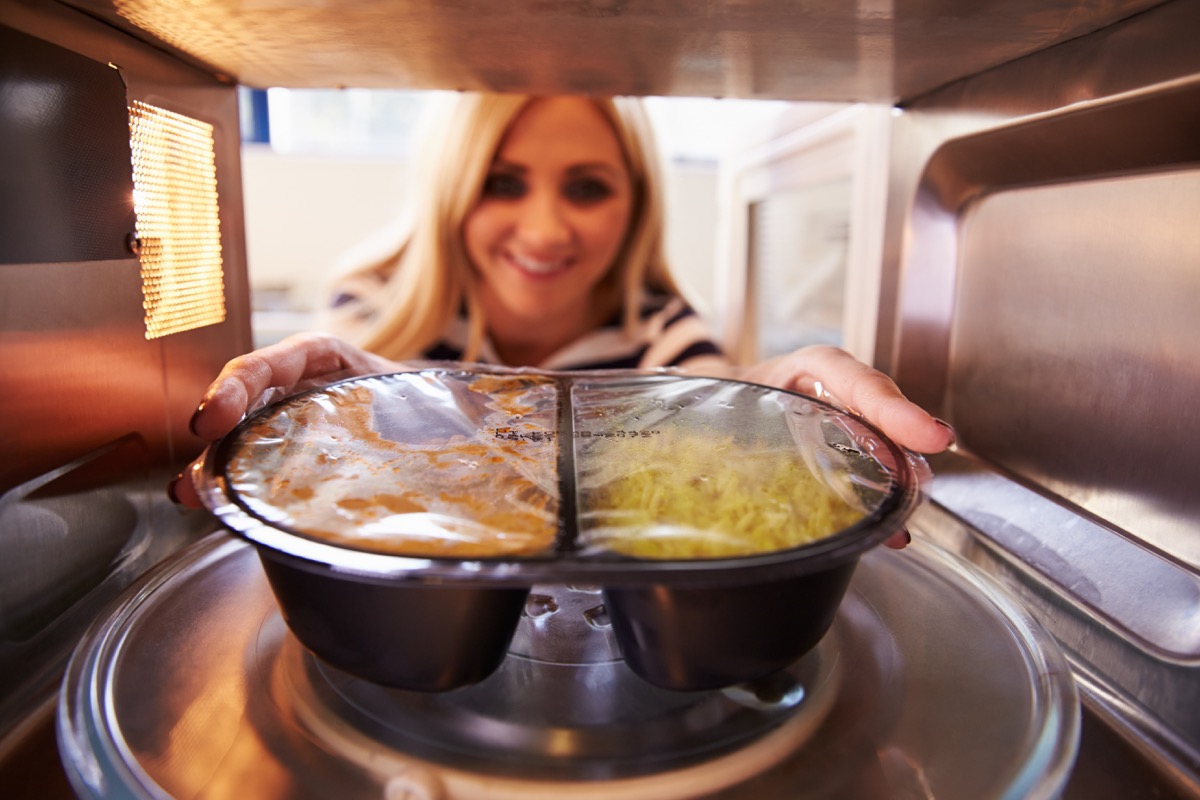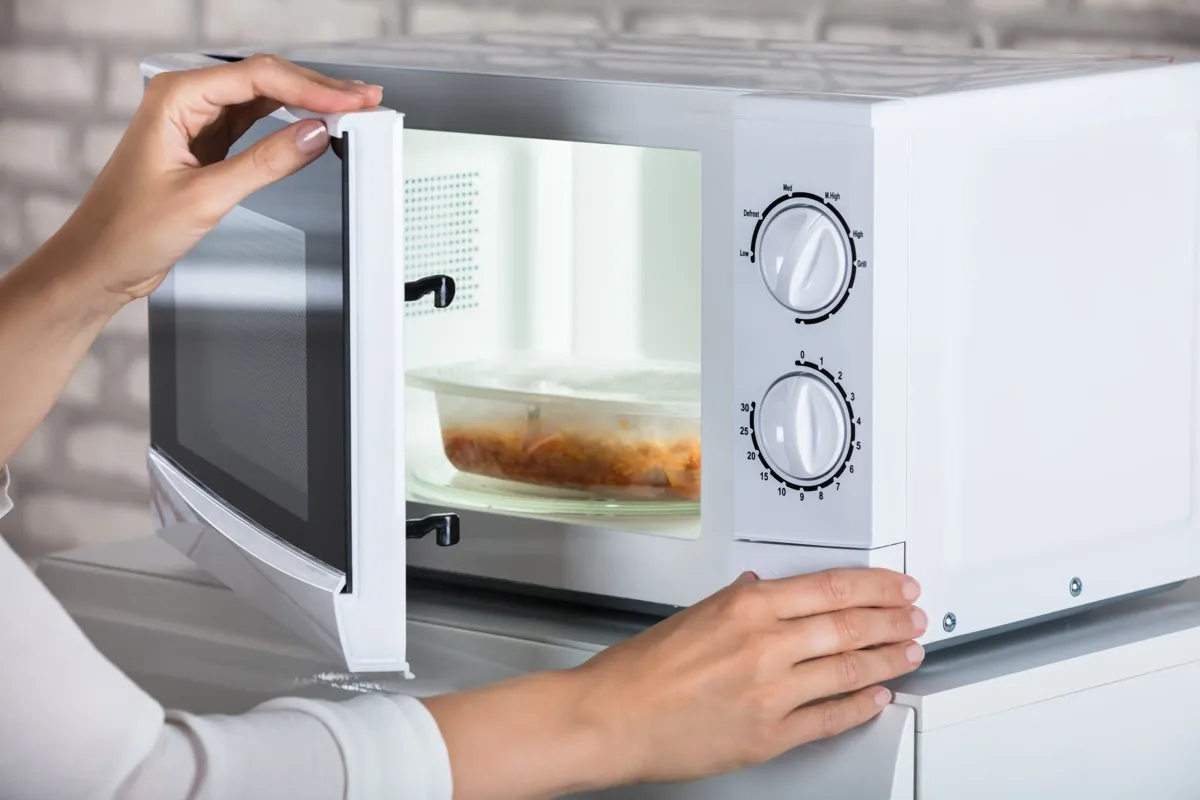Never Eat Microwaved Food Without Doing This First, CDC Says
Making a microwaved meal only takes minutes—and so does getting food poisoning.

When you want a meal and you want it fast, you probably head straight for your microwave oven. But experts at the Centers for Disease Control and Prevention (CDC) warn that all too often, you may be skipping a crucial step in your meal-making process—and one that ensures your safety. Their experts say that you should never eat a microwaved meal without doing this one thing first and you could be putting your health at risk if you skip this step. Read on to find out if you've been making this risky move and how to keep yourself safe.
RELATED: 7 Foods You Should Never Put in Your Slow Cooker.
Don't eat microwaved food without checking its temperature first.

According to the CDC you should never eat microwaved food without first checking its temperature with a food thermometer—especially if you're heating meat. "When you think your food is done, place the food thermometer in the thickest part of the food, making sure not to touch bone, fat, or gristle," the health authority advises. Checking more than one part of your food will help alert you to a microwave that cooks unevenly.
CDC experts say that your thermometer should in most cases reach a minimum of 165 degrees Fahrenheit, "a temperature hot enough to kill germs."
RELATED: Never Do This Before Washing Your Fruits and Vegetables, CDC Warns.
Reheating food below this temperature could be a serious health hazard.

Failing to microwave your food to a safe temperature can put you at increased risk of food poisoning. Experts say this holds true regardless of whether you're cooking pre-packaged microwavable meals or yesterday's leftovers—both of which have been linked to Salmonella and Listeria outbreaks.
"Thorough cooking in the microwave is especially important because, contrary to popular belief, microwaves don't cook food from the inside out," warns Consumer Reports. "The microwaves only penetrate food to a depth of about one to one and a half inches. At the center, thicker foods cook by conduction, as the heat moves from the outside in," their experts explain.
Of all foods, poultry is perhaps the most likely to make you sick when improperly microwaved. "In our tests for bacteria in fresh chicken published in 2007, we found that 83 percent of the birds harbored campylobacter or Salmonella, a stunning increase from 2003, when 49 percent of the birds tested harbored one or both pathogens," says Consumer Reports.
However, the safe minimum temperature may vary depending on what you're cooking.

The CDC notes that some meats require higher minimum temperatures than others. Their experts say that all poultry should be cooked to 165 degrees Fahrenheit, while ground beef, lamb, and pork must reach a minimum of 160 degrees Fahrenheit. Fish can be lower still, at 145 degrees Fahrenheit. Heat other cuts of beef, pork, and lamb, such as veal chops, roasts, and steaks to at least 145 degrees Fahrenheit, then let them stand for three minutes before serving. Doing so enables the food to continue cooking after the microwave turns off and gives food a more consistent temperature throughout, the CDC explains.
For more food safety news sent directly to your inbox, sign up for our daily newsletter.
>Adjust your cooking time depending on your microwave's wattage.

The CDC recommends looking up your microwave's wattage, either in the owner's manual, the manufacturer's website, or inside the oven's door. If your microwave has a lower wattage—typically meaning between 600 and 900 watts—it means your food may require a longer cooking time.
When in doubt, a food thermometer will take the guesswork out of whether or not your meal is safe and ready to eat.
RELATED: This Is the New No. 1 Cause of Food Poisoning, CDC Study Says.





















